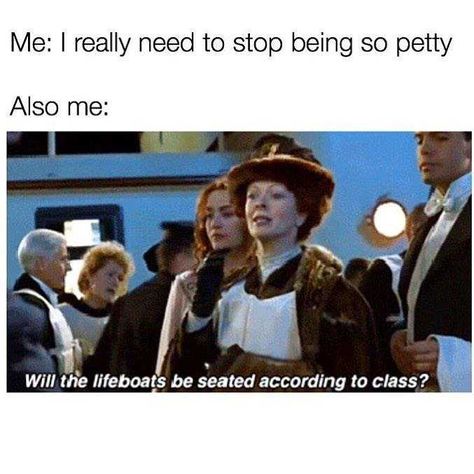An End to Soiled San Francisco Sidewalks?
Between finding parking and finding an apartment in San Francisco ranks the undue stress of searching for a public restroom. The city has few truly public restrooms to begin with, and most of them close overnight. Few alternatives exist. Sooner or later you’re bound to find a hot, wet coil delivered on the curbside, between parked cars, in flower planters, playground sand, and sometimes the middle of the sidewalk like somebody’s abandoned newborn. I am alert/revolted/excited yet never surprised when I step outside my Tenderloin apartment. Where else would a dump end up if not a proper toilet?
In the short term, watch where you step. San Francisco’s pervasive poop problem has entered the city’s historical canon. Journalists appreciate our involuntarily-learned skills of discerning animal and human waste by smell alone. Stu wrote a piece about it for the SF Examiner. I even wrote one warning tourists, speaking of acquired talents like peripheral PoopVision. Residents and tourists alike blame the city’s homeless population for carpetbombing the streets. However, there is no difference between the shit of a homeless person and that of someone housed. When you’ve got to go, you gotta go. For too many the question is, where?
Who gives a shit?
Why should it matter that San Francisco’s walkways be sanitary? In other words, who gives a shit? In Tarō Gomi’s words, everyone. Nearly nine hundred thousand people work, play, and reside here. The city also has one of the nation’s largest unhoused populations. San Francisco relies on tourism, which has yet to return to pre-lockdown levels. Simply put, everybody’s got to go sometime.
It’s no mere matter of comfort or aesthetics. For health and safety’s sake, we need everybody to do their business in a restroom. Otherwise we force everyone, ourselves included, to suffer the consequences. In 2014, a young teenager appealed to city officials with one simple request: a feces-free walk to and from school.
“It was pretty gut-wrenching to hear a 13-year-old say that,” said Rachel Gordon, Director of Policy and Communications for San Francisco Public Works.
The extent to which conditions had degraded was nothing short of a biological safety hazard. Indeed, Philadelphia health officials traced a 2019 Hepatitis-A outbreak to poor/no handwashing among those forced to relieve themselves outdoors. Three months after that 2014 meeting, SF Public Works launched the Pit Stop program. Thirty-three public toilets are now available free-of-charge. Nine are open twenty-four hours. The innovative Pit Stop program operates out of mobile stations, porta-potties, and permanent toilets throughout the city. Since the program began, complaints of crappy streets in the TL have decreased.
Gordon says staffing prevents abuse and vandalism of these facilities. “What makes a Pit Stop different from other public toilets is that Pit Stops are staffed. We know people need to take care of their needs. Everyone does. We want to make sure that if you use a Pit Stop, you’ll know that it’s well-maintained, cleaned, staffed, and a safe place to go to the bathroom.”
Weaponizing Human Waste
Vocal opponents of the Pit Stop program believe public restrooms will encourage more encampments. They resist public restroom installations in their communities, citing drug use and overdoses, sex work, and offensive odors. Waterfront residents peddled the same fears in 2019 when the city approved plans for a new shelter near the Embarcadero. Wealthy voters tried vehemently to halt construction. Now, especially after Chesa Boudin’s recall I wonder, whose agenda would benefit from conditions getting so squalid that mobilization against the homeless seems preferable?
“It’s an interesting balance,” Gordon says. “We hear from residents, neighborhood folks, who say, ‘Do something about the human waste.’ We’ll bring a toilet in there and they’re like, ‘I don’t want a toilet anywhere near me.’”
The lack of public restrooms is symptomatic of a citywide class war. It’s a subject Laura Norén, a postdoctoral associate at New York University and co-editor of Toilet: The Public Restroom and the Politics of Sharing, knows well.
“It’s basically the same script that just plays over and over and over again—and these social tensions often meet in the bathroom,” says Norén. “Who gets access to the bathroom really could be summarized as who should have access to public space and public discourse. Somehow, that crystallizes around the bathroom, because people’s fears are the highest in the bathroom.”
The restroom is a site of anxiety, an uncomfortable meeting of public and private. The body is unusually vulnerable there, and what goes on behind closed stall doors remains a taboo subject for conversation. To use clean facilities and emerge unsoiled only reaffirms one’s status as Most Evolved Hominid. The reward is privacy, and in the United States, privacy is an ever-vanishing privilege. Public restrooms are then, like Norén says, a means of controlling who gets to be in public.
On-the-ground Logistics
The City of San Francisco spends approximately $100,000 annually to operate one permanent public toilet. Then there’s the matter of adequately paying attendants to work long hours, overnight in particular. Twenty-four-hour locations require two on-site staff members. “It’s just under thirteen million dollars a year to operate the program,” says Rachel Gordon. “The bulk of the cost is for staffing.” Self-cleaning toilets, while highly desired, require a lot of water. In drought-stricken California, this option is also the one most out-of-reach.
SFPW discussed unmanned Pit Stops to save money, but that would leave them vulnerable to misuse and vandalism. Debilitating a Pit Stop has the same effect as closing it, just with costlier consequences.
Serial shitting across San Francisco may be evidence of something more sinister at work. Debates about who deserves restroom access have less to do with odor and cleanliness (“Ventilation just makes life better,” says Toilet co-editor Harvey Molotch. “That goes for disease prevention, and of course the noxious odor. If you increase ventilation, it [makes] an improvement.”) than they do obsessive xenophobia.
“Basically, [Americans] are afraid of strangers,” Norén said for Bloomberg in 2021. “It was considered beyond the pale that you would install a public toilet that didn’t practically burn itself down and rise from the ashes every time someone used it.”
When Restrooms Are For Customers Only, where can one turn? San Francisco is unique in its endeavours to help the houseless (something the city’s burgeoning Conservative government eagerly takes credit for). Public restrooms are as much a task of government policy and infrastructure as they are a human rights issue. Responsibility for their installation and upkeep is ours. Is the Pit Stop program the best we can do?
Until we end homelessness altogether, it has to be.












